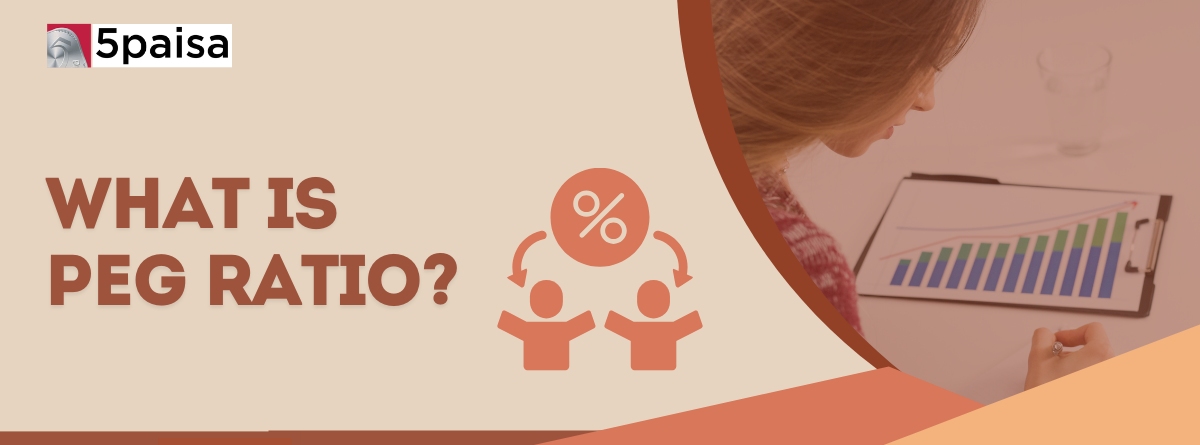Content
- PEG Ratio
- What is PEG ratio?
- How to Calculate the PEG ratio?
- Importance of PEG Ratio in Stock Valuation
- Advantages & Disadvantages of PEG ratio
- What Is Considered to Be a Good PEG Ratio?
- What Does a Negative PEG Ratio Mean?
- PEG Ratio Example
- PEG Ratio vs P/E Ratio
- Limitations of PEG Ratio
- PEG Ratio in Different Sectors
PEG Ratio
Within the expansive realm of financial metrics employed to evaluate investment prospects, the Price/Earnings to Growth (PEG) ratio emerges as a potent instrument for investors. By amalgamating the principles of P/E ratio and growth rate, it delivers a more holistic perspective on a business valuation.
So, let's explore all about PEG in detail like, what is PEG ratio and many more things.
More Articles to Explore
- Difference between NSDL and CDSL
- Lowest brokerage charges in India for online trading
- How to find your demat account number using PAN card
- What are bonus shares and how do they work?
- How to transfer shares from one demat account to another?
- What is BO ID?
- Open demat account without a PAN card - a complete guide
- What are DP charges?
- What is DP ID in a demat account
- How to transfer money from demat account to bank account
Disclaimer: Investment in securities market are subject to market risks, read all the related documents carefully before investing. For detailed disclaimer please Click here.
Frequently Asked Questions
PEG Ratio = P/E Ratio / Annual Earnings Per Share (EPS) Growth Rate.
A lower PEG ratio is generally considered better. It suggests that a stock is undervalued relative to its earnings growth potential. A PEG ratio below 1 is often favorable, indicating a potentially undervalued investment opportunity. Investors seek lower PEG ratios for a balanced combination of value and growth.
A PEG ratio of 1 suggests that a stock is fairly valued relative to its total earnings growth rate. It shows a balanced relationship between the stock's P/E) Ratio and earnings growth, indicating that investors are paying a perfect price considering the business growth prospects.
A PEG ratio of 2 indicates that investors are paying twice the stock's earnings growth rate for each unit of earnings, suggesting the stock might be overvalued. A PEG ratio higher than 1 typically signals an overvaluation, implying the stock's price is relatively high compared to its earnings growth potential.
You can find the PEG ratio for a specific stock on financial websites and stock market analysis platforms such as Yahoo Finance, Google Finance, Bloomberg, or dedicated brokerage platforms. These platforms often provide detailed financial metrics, including the PEG ratio, allowing investors to make informed decisions about specific stocks.



